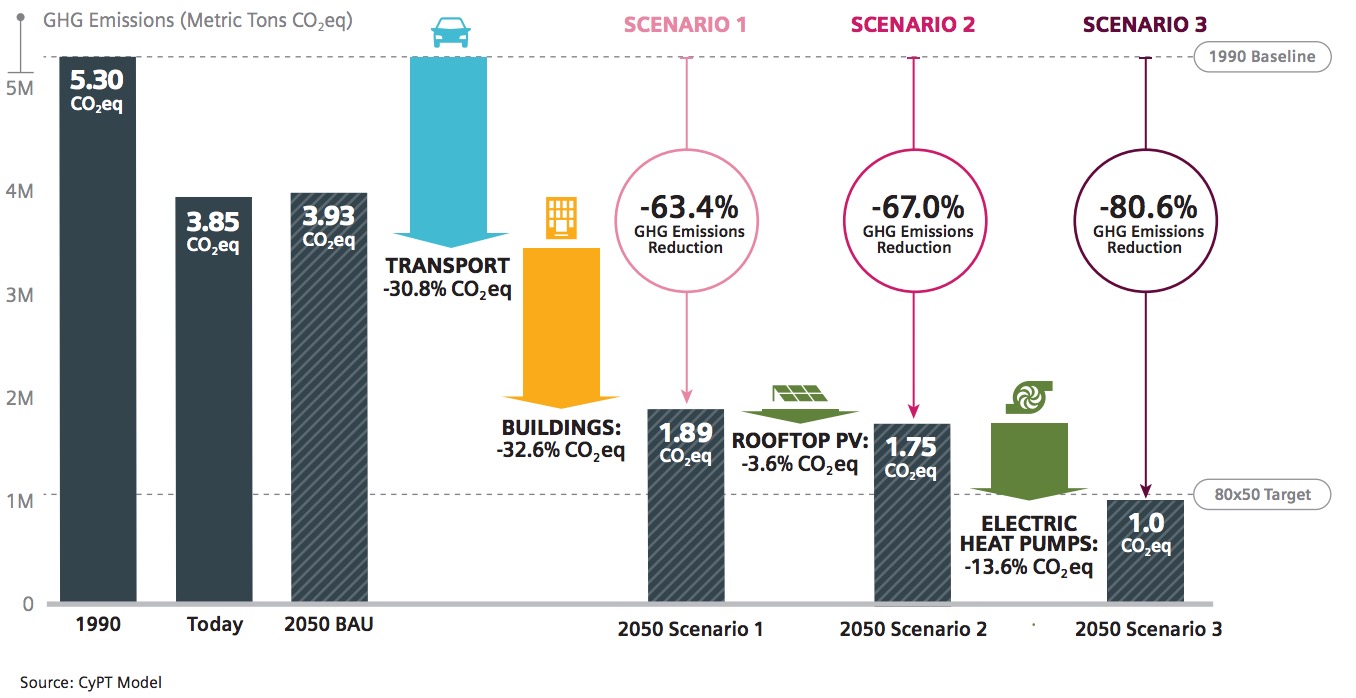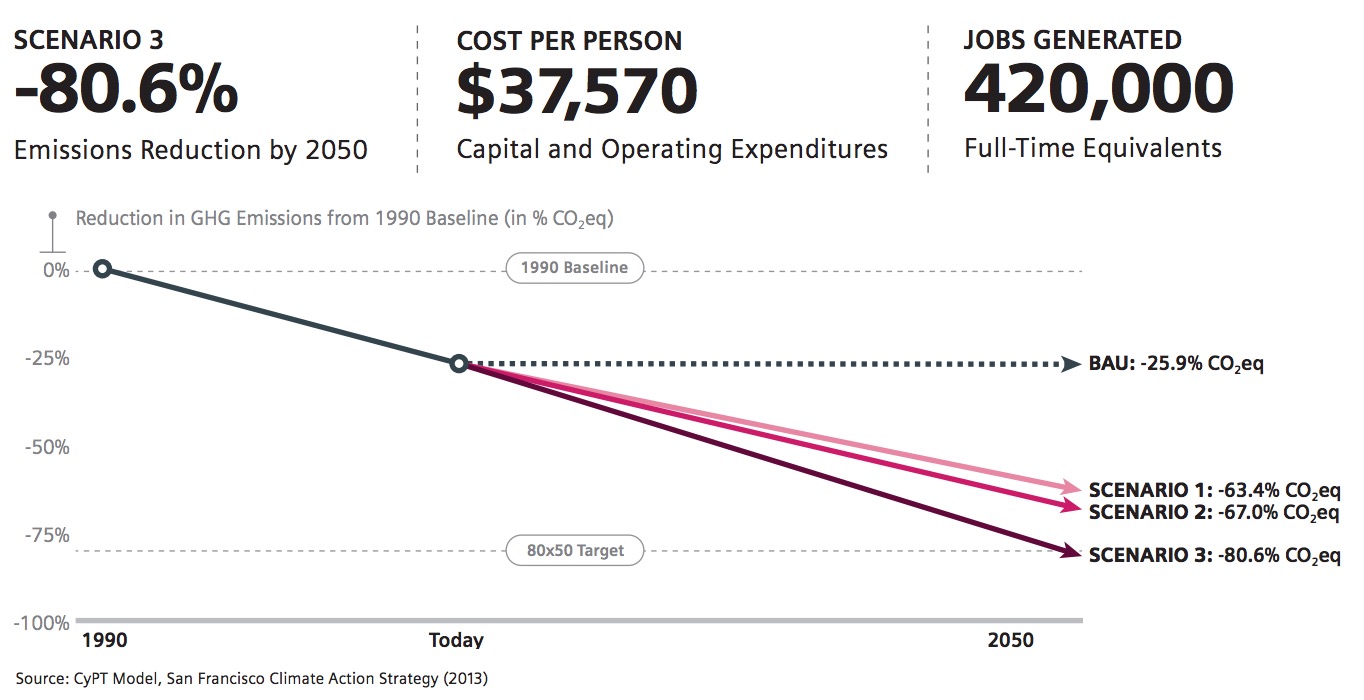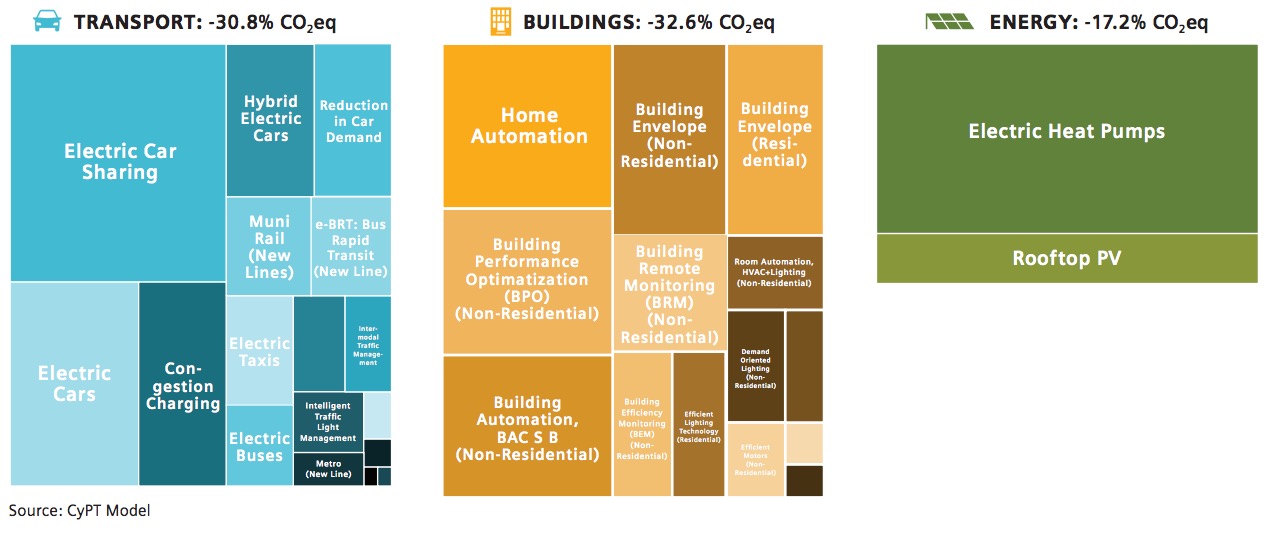Executive Summary
Siemens City Performance Tool (CyPT) in San Francisco
When Siemens approached the City of San Francisco about using the City Performance Tool (CyPT), Siemens understood that San Francisco was not a city interested in setting ambitious sustainability targets – it was a city that already had ambitious goals and was now focused on tools and intelligence to meet those targets, summarized as 0-50-100-Roots.
Over the course of a year, Siemens collaborated closely with the San Francisco Department of Environment (SFE) and nine other agencies to conduct an analysis of the City’s infrastructure, defined as its entire built environment and transport system. The team used the CyPT model to test technology pathways for achieving San Francisco’s “80×50” target (reducing CO₂eq emissions 80% by 2050 against a 1990 baseline) within the context of the local 0-50-100-Roots framework, as well as the State of California’s policy leadership. This report reviews the technology pathways and their effects within San Francisco. Results illuminate how decisions by San Francisco as a whole – the public sector, utilities, business, and the citizenry – to invest in energy efficient buildings, clean energy, and a multi-modal transport network can accelerate the City’s strong record of reducing GHG emissions, while creating jobs and improving air quality.
80×50 requires a collaborative effort, and the three scenarios and 36 technologies examined in this project require investment – and action – from both public and private sectors. The economic and engineering analysis provided by the CyPT provides guidance for prioritization of these investments, assisting residents, businesses, and governments alike to understand a credible and economically beneficial path to develop a sustainable future through energy efficiency in buildings and transport, renewable electricity, and decarbonization of both the grid and heat sources.
Deep Carbon Reduction Can Be Achieved
The CyPT tests three infrastructure scenarios for achieving 80×50. Under the most ambitious scenario, in which San Francisco implements 34 building and transport efficiency technologies at aggressive, but feasible rates, it saturates 80% of rooftops citywide with photovoltaics, and electric heat pumps replace at least 80% of carbon-based heat sources; San Francisco can reduce CO₂eq emissions by 80.6% from the 1990 baseline, reaching its 80×50 goal.

The Big Numbers
The proposed infrastructure scenario would reduce annual CO₂eq emissions 80.6% from the 1990 baseline. Operating and capital expenditures between today and 2050 total roughly $51 billion, and investments in 34 buildings and transport technologies would generate more than 420,000 full-time equivalent jobs (FTEs), with an FTE defined as the amount of work done by one full-time employee in a year. Although economic impacts apart from jobs creation were not calculated, implementation of energy, buildings, and transport technologies would certainly have positive ripple effects on the local economy, including inducing business investment and reducing citizens’ cost of using the City’s infrastructure.

High-Performing Technologies
The analysis identified three top-performing technologies in reducing CO₂eq emissions: electric car sharing (transport), home automation (buildings), and electric heat pumps (energy). Compared to our business-asusual (BAU) scenario, electric car sharing offers the potential to reduce emissions by 0.5 million metric tons by 2050 – a 13% reduction from a single technology. At this scale, electric car sharing would also improve air quality by reducing local criteria emissions 20%, and generate roughly 90,000 full-time equivalents over the investment period.

About Siemens
www.siemens.com
Infrastructure is the backbone of a city’s economy and urban development projects help to create a livable and sustainable smart city. With automated and intelligent infrastructure technologies, Siemens expertise is integrating hardware and software to improve quality of life, capacity and efficiency in metropolitan areas. Siemens established the Global Center of Competence Cities (CoC) to specifically address the needs of urban planners and to enter into a structured dialogue and base lining assessment with urban decision makers.
Tags: CA, California, CyPT, San Francisco, Siemens






 RSS Feed
RSS Feed